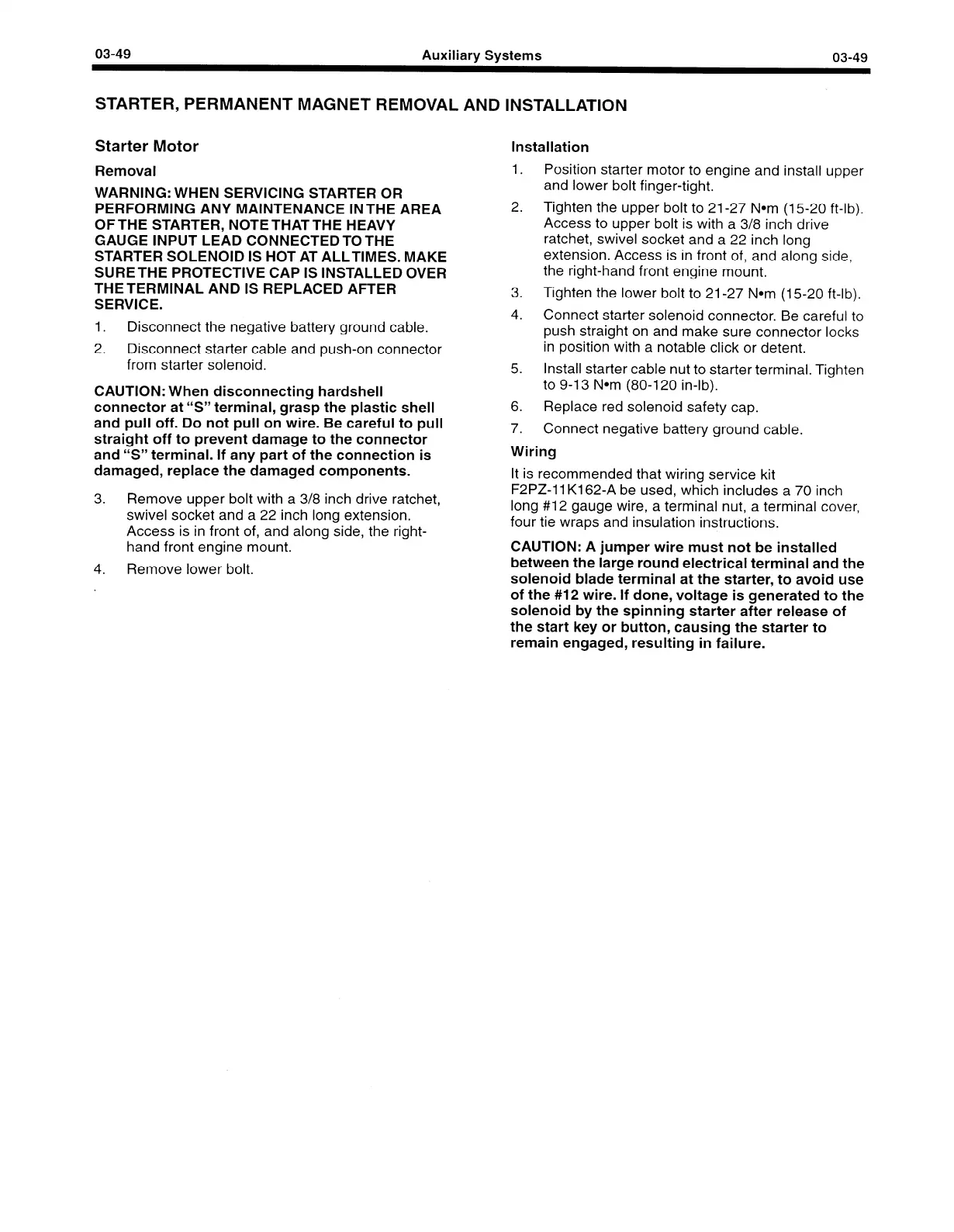03-49 Auxiliary Systems
STARTER, PERMANENT MAGNET REMOVAL AND INSTALLATION
Starter Motor
Installation
Removal
WARNING: WHEN SERVICING STARTER OR
PERFORMING ANY MAINTENANCE INTHE AREA
OFTHE STARTER, NOTETHATTHE HEAVY
GAUGE INPUT LEAD CONNECTED TO THE
STARTER SOLENOID IS HOT AT ALLTIMES. MAKE
SURETHE PROTECTIVE CAP IS INSTALLED OVER
THETERMINAL AND IS REPLACED AFTER
SERVICE.
1.
Disconnect the negative battery ground cable.
2. Disconnect starter cable and push-on connector
from starter solenoid.
CAUTION: When disconnecting hardshell
connector at “S” terminal, grasp the plastic shell
and pull off. Do not pull on wire. Be careful to pull
straight off to prevent damage to the connector
and “S” terminal. If any part of the connection is
damaged, replace the damaged components.
1.
Position starter motor to engine and install upper
and lower bolt finger-tight.
2. Tighten the upper bolt to 21-27 Nom (15-20 ft-lb).
Access to upper bolt is with a 3/8 inch drive
ratchet, swivel socket and a 22 inch long
extension. Access is in front of, and along side,
the right-hand front engine mount.
3. Tighten the lower bolt to 21-27 Nom (15-20 ft-lb).
4. Connect starter solenoid connector. Be careful to
push straight on and make sure connector locks
in position with a notable click or detent.
5. Install starter cable nut to starter terminal. Tighten
to 9-l 3 Nom (80-I 20 in-lb).
6.
Replace red solenoid safety cap.
7. Connect negative battery ground cable.
Wiring
3.
Remove upper bolt with a 3/8 inch drive ratchet,
swivel socket and a 22 inch long extension.
Access is in front of, and along side, the right-
hand front engine mount.
4. Remove lower bolt.
It is recommended that wiring service kit
F2PZ-11 K162-A be used, which includes a 70 inch
long #I2 gauge wire, a terminal nut, a terminal cover,
four tie wraps and insulation instructions.
CAUTION: A jumper wire must not be installed
between the large round electrical terminal and the
solenoid blade terminal at the starter, to avoid use
of the #I2 wire. If done, voltage is generated to the
solenoid by the spinning starter after release of
the start key or button, causing the starter to
remain engaged, resulting in failure.
